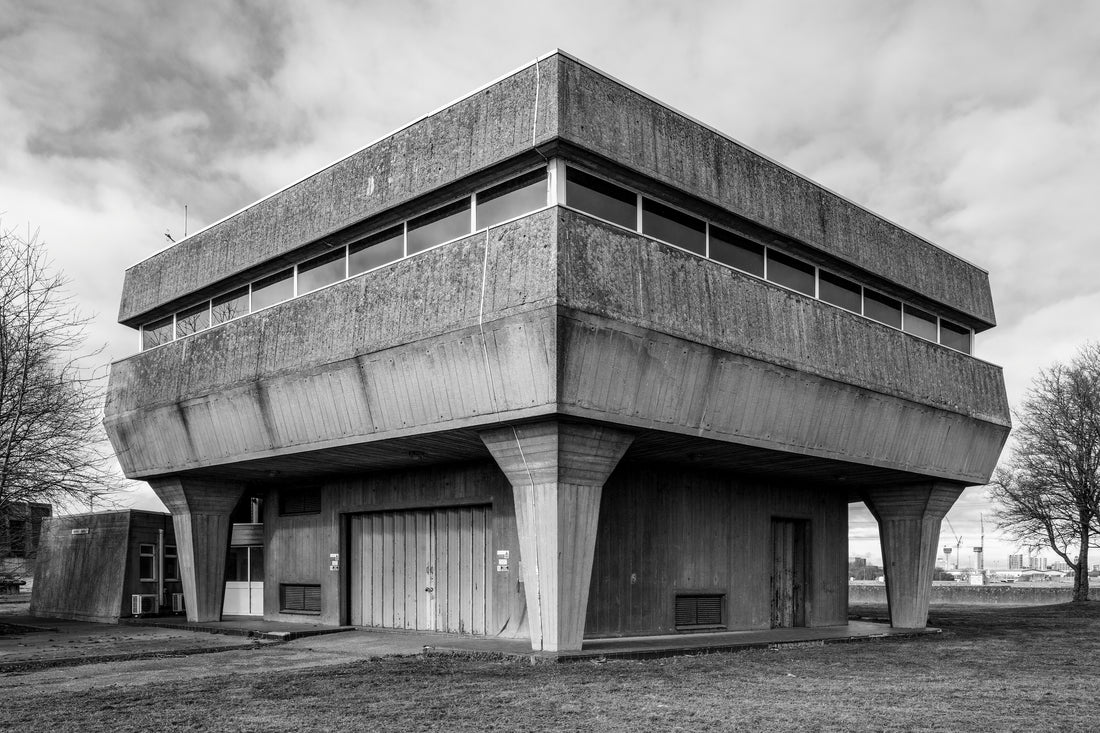
Brutalist Building of the Month: Monitor Building, Beckton Sewage Works
Share
The Monitor Building at Beckton Sewage Treatment Works’ purpose might not evoke the same romance and mystique as some of the world’s more lauded concrete constructions, but April’s Brutalist Building of the Month is part of a rich history of great public works and architecture in London. Photography by Simon Phipps.
Beckton Sewage Treatment Works was first built in 1864 as part of Joseph Bazalgette’s master plan to establish an extensive underground sewerage system for London. Up until the 19th century all of the city’s wastewater was fed into the river Thames, which served as an open sewer flowing to the ocean at Southend. The obvious sanitary problems this presented were exacerbated by the rapid expansion of London’s population and industry during the early Victorian era. During this time the river was unnaturally warm due to the high levels of ammonia, lime, cyanide, and carbolic acid which were dumped into the water from industries on the riverbank. These chemicals had also rid the water completely of oxygen, leaving it toxic and dangerous to animal and human life. The extreme pollution was the source of multiple cholera outbreaks and the death of tens of thousands in the city in the early 1800s.
Despite Dr. John Snow correctly diagnosing the river as the source of the outbreaks in 1849, it wasn’t until the Great Stink of 1858 – a period of a few months in which hot weather made the stench of human waste and effluent unbearable – that the government decided to work on a permanent and adequate underground sewerage system. As Chief Engineer of London’s Metropolitan Board of Works, Sir. Joseph Bazalgette drew up a plan to construct a total of 1,182 miles of mains and street sewers to divert wastewater to the outskirts of London. The primary processing plant for the waste was built in what is now the London Borough of Newham and over the years has been expanded and developed to become Beckton Sewage Treatment Works. It is Europe’s largest sewage processing plant covering a 250-acre site and treating the waste of more than 3.5 million people daily.
The Monitor Building at Beckton STW was commissioned in 1967 by the Greater London Council and designed by architects at the Public Health Engineering Department. Its exterior shows the characteristic pattern left by the wooden-board moulds into which the concrete was poured during construction, reminiscent of more glamorous Brutalist buildings like The National Theatre. The most striking aspect of its design are the four legs which support its raised structure, giving it the appearance of a large concrete quadruped walking across the works. Despite its less than alluring location, the Monitor Building is part of a rich architectural history related with London’s sewer systems. It joins Crossness Pumping Station and the Western Pumping Station as an example of an era’s distinctive architecture reflected in public sanitation works.
The Monitor Building is featured on our Brutalist Calendar 2024 for April. Since 2019, our annual, limited-edition monthly wall calendar is a celebration of some of the most awe-inspiring and influential examples of Brutalist architecture around the world. This year's calendar features stunning photography of Brutalist architecture from Buenos Aires to Bulgaria. Sign up for the newsletter below to be informed of the release of next year's calendar.
